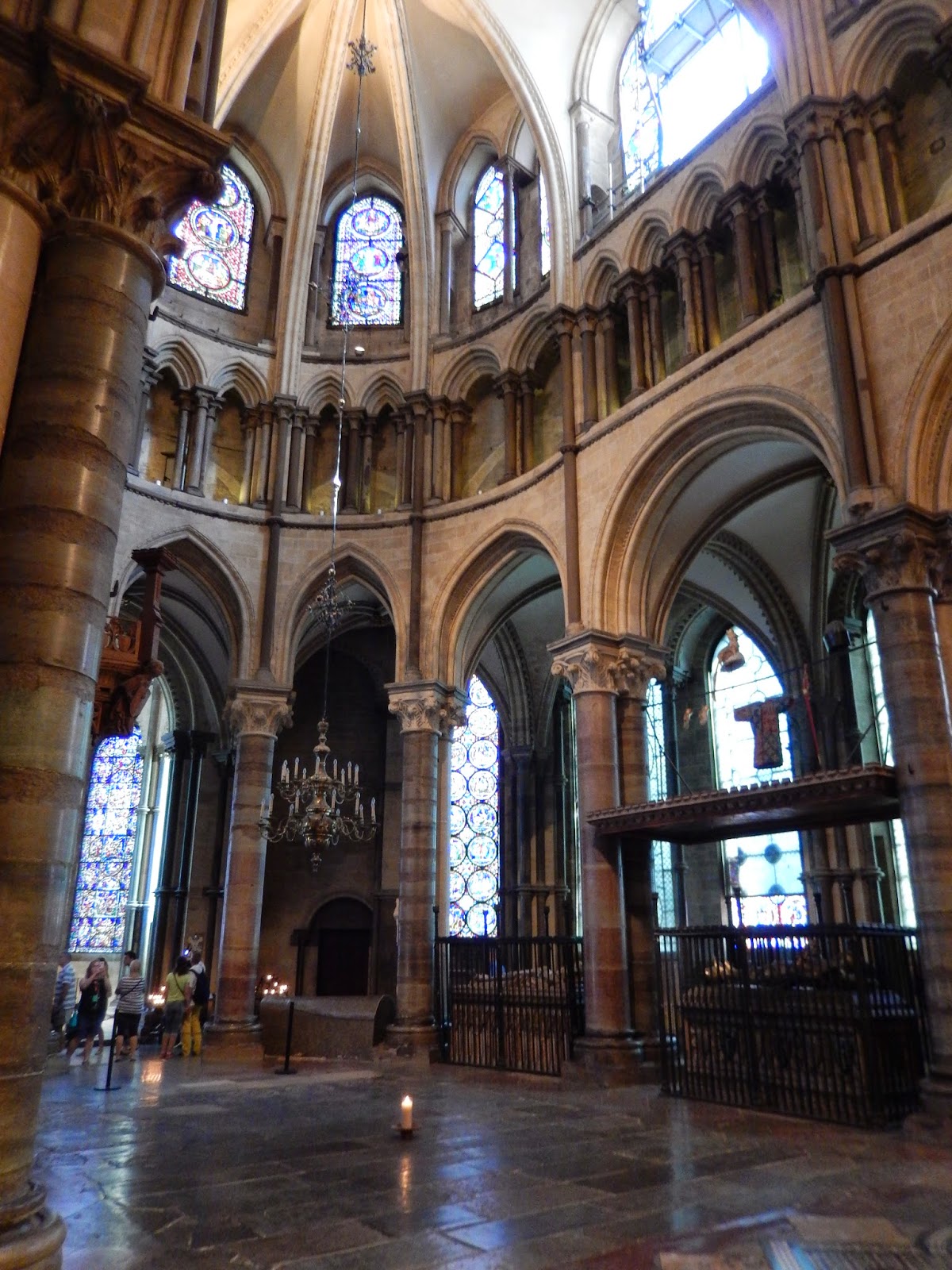Another big tour day for us...Leeds Castle, Dover, and Canterbury.
Leeds Castle is in Kent, England, originally built in 1119. In the 13th century it came into the hands of King Edward I, for whom it became a favorite residence. In the 16th century, Henry VIII used it as a residence for his first wife, Catherine of Aragon.
Leeds Castle today dates mostly from the 19th century and is built on islands in a lake:
Jill in front of a part of the castle that remains from the 12th century:
Ditto for Glenn:
A little info on "The castle under the Tudors" in the 16th century:
This "horned helmet" originally formed part of the court armor of Holy Roman Emperor Maximilian I, who gave it to Henry VIII as part of a special suit of armor (which hasn't survived):
This is a portrait Jill and I really liked of Lady Baillie and her daughters Pauline and Susan in 1947. Lady Baillie was responsible for the restoration of the castle throughout the 20th century and for donating the castle to the public.
The dining room; we think this is the room in which the portrait above was painted:
Can't remember which room this was, but we did learn that Lady Baillie loved having celebrities stay at the castle, including the Queen Mother, the Prince of Wales and Wallis Simpson, the Duke of York, Queen Maria of Romania, Alfonso XIII of Spain, Douglas Fairbanks senior and junior, Fredric March, Charlie Chaplin, Errol Flynn, Robert Taylor, James Stewart and others.
This room (re-built, remodeled, redecorated) was the room in which Catherine of Aragon (1485 - 1536) lived. The portrait is of Lola Montez (1821 - 1861), an actress who was the mistress of Franz Liszt and King Ludwig 1 of Bavaria:
Jill in one of the hallways:
Then it was back on the bus to the white cliffs of Dover!

The beach wasn't sand, but pebbles:
A memorial to the Dunkirk evacuation in 1940:
And last but not least, Dover Castle on the bluffs above the white cliffs... Completed by Henry II in around 1200. It was also, we were told by the guide, where Winston Churchill stood to watch the Battle of Britain (1940):
Finally, we visited Canterbury Cathedral, originally built in 700 and completed in 1100 (and at various times later). The Cathedral is known for the murder of the archbishop, Thomas Becket, in the north-west transepton Tuesday December 29, 1170 by knights of King Henry II. The king had frequent conflicts with Becket and is said to have exclaimed in frustration, "Who will rid me of this turbulent priest?" The knights took it literally and murdered Becket in his own cathedral.
Who's that peaking out?
The nave, where the poor folk prayed:
Passageway into the choir (where the monks prayed):
Close-up of choir passageway:
Looking straight up from in front of the choir passageway:
View from the choir entrance back through the nave:
Inside the choir, looking towards the chapel and high altar:
The side of the choir:
Closer view of the chapel and high altar:
Tribute candle to Thomas Becket in the chapel:
Chapel again, with Becket candle:
View from the high altar back through the chapel and choir:
The high altar:
Tribute to Thomas Becket:
The stained glass (apparently replaced/refurbished/repainted in the 1800s) was beautiful:
Tomb of the "Black Prince" Edward of Woodstock, Prince of Wales (1330 – 1376). He was the eldest son of King Edward III of England as well as father to King Richard II of England:
Not sure if this was the Black Prince's doggie:
And as with all of these churches, there are many tributes to the fallen:























































